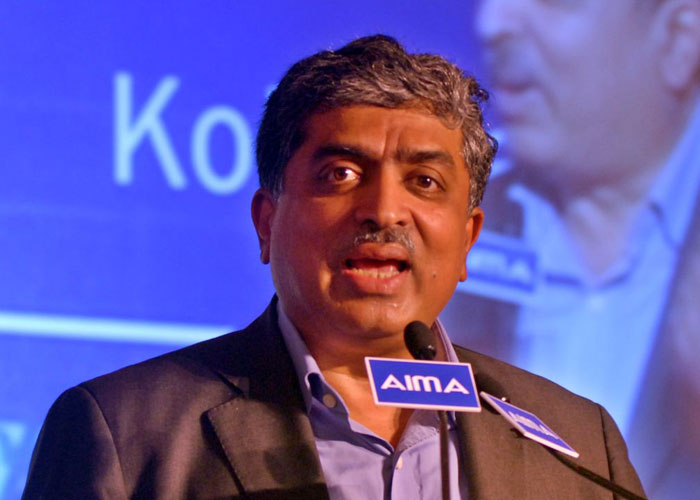
COVID vaccine: Nilekani says scale, distribution to be big tasks for India
Nandan Nilekani, the former chairman of the Unique Identification Authority of India (UIDAI) and architect of Aadhaar, says the scale and distribution of the COVID-19 vaccine would be an enormous task for India.

Nandan Nilekani, the former chairman of the Unique Identification Authority of India (UIDAI) and architect of Aadhaar, says the scale and distribution of the COVID-19 vaccine would be an enormous task for India. The country does not have an adult vaccination system, unlike the US, where he says, half the population of the US takes a flu vaccine every year.
Interactive: The great race to a COVID vaccine
Nilekani says India will have to build the distribution of the vaccine from scratch. “My recommendation is that we build a completely new vaccination channel with 200,000 people who do vaccinations. Some of the current people can also participate but we will have to invest in creating a new infrastructure for vaccination at scale,” he said in an interview to The Indian Express.
Talking about the humongous scale, he said: “We have to vaccinate the entire population in two years, which means we have to reach 1.3 billion people in two years, and assuming that it is a dual dose vaccine, that’s 2.6 billion vaccinations, or 1.3 billion vaccinations a year. That’s more than a 100-million vaccinations a month and more than three million a day.”
He says India should design a system that can do 10 million vaccinations a day across the length and breadth of the country, but all unified by a common digital backbone, so that every person gets the same experience and the same information is recorded. “It is basically bringing the population scale approach that we used in Aadhaar to a new issue (vaccination) which is, in fact, much more complicated.”
Also read: COVID-19: When will it end? Two months or so, says Levitt’s Model
He says India has a terrific record in vaccination for children and pregnant mothers. “But we have really no experience of adult vaccination and that is the bulk of what we have to do with the COVID-19 vaccination,” he said.
Nilekani says if you load the COVID-19 vaccination on our existing infrastructure, not only will it be a huge overload, it will end up at a point where a baby is not getting immunized because people responsible for it have been diverted for COVID-19.
“My suggestion is that we create a platform to do eight-10 million vaccinations a day by authorized vaccinators. We will have a training system to train 200,000 people who will know how to vaccinate, explain to people the side-effects, they will know how to make people comfortable with the vaccination,” he said, adding only certified vaccinators can participate in this.
Also read: Safety, efficacy main concerns: Nobel laureate on Russia’s Covid vaccine
“There will be an app on a PC or a smartphone, and one can take an appointment for vaccination. I will give my name, do an Aadhaar authentication… The name of the person, the name of the vaccinator, which vaccine was used, what time, date, location, will be recorded.
“The information could then be sent in real time to a cloud location, and it will send back a digital certificate to me, saying that I have been vaccinated. Because in the Covid-19 vaccine system, it is not only important that I am vaccinated, it is also important that you know that I am vaccinated,” Nilekani said while spelling out the nitty-gritty of a system that India could adopt.
He said if the immunisation is going to be limited, because it is not known how long the immunity of these vaccines lasts, then the system also needs to send a reminder to that person at the end of that period. “All this requires sophisticated technology because things have to be done for over a billion people”.
He presumed that it will be a free vaccine or covered by something like an Ayushman Bharat insurance scheme. But the private companies should pay for their own employees, he said. “We will have to divide things. Government funding for the vulnerable and those already covered by government insurance programmes, private sector funding for their employees and associates, and perhaps philanthropic funding for the rest from CSR. We have to think through the three models,” he said.

